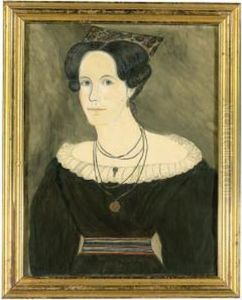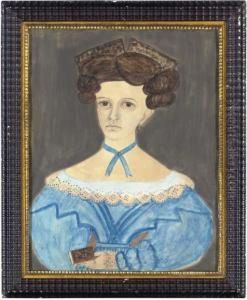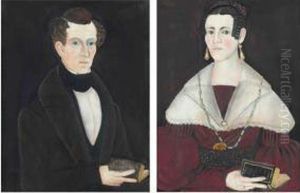Samuel A. Shute Paintings
Samuel Addison Shute (1803-1836) was an American painter known for his distinctive style in folk art, particularly in the realm of portraiture. Born in New Hampshire, Shute's early life and training in art remain somewhat obscure, reflecting the often undocumented nature of folk artists' backgrounds during this period. Despite the lack of formal training, Shute managed to develop a unique artistic voice that captured the essence of early 19th-century American life.
Shute's work is characterized by its detailed representation of subjects, with a particular focus on the individual characteristics of his sitters. This attention to detail not only provided a realistic portrayal but also imbued his works with a sense of personality and depth rarely seen in the folk genre of his time. His color palette was often vibrant, using colors to enhance the emotional and psychological depth of his portraits.
In the early 1820s, Samuel A. Shute partnered with his brother, Joseph, to form a traveling portrait studio, which moved through New England capturing the likenesses of middle-class Americans. This venture was part of a broader trend during the era, where itinerant artists would travel from town to town offering their services, a testament to the growing middle class's desire for personal and family memorabilia.
Despite his relatively short life, Samuel A. Shute's contribution to American folk art remains significant. His works are celebrated for their authenticity and vibrancy, capturing the spirit of an era that was rapidly evolving. Today, his paintings are considered important artifacts of American cultural history, providing insight into the social and personal identities of the early 19th century.
Shute's untimely death in 1836 cut short a promising career, but his legacy lives on through his surviving works. His portraits continue to be studied and admired for their technical skill and emotional depth, securing his place in the annals of American art history as a pivotal figure in the development of folk portraiture.


